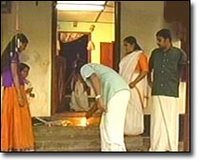International Workers' Day
International Workers' Day (a name used interchangeably with May Day) is the commemoration of the Haymarket Riot of 1886 in Chicago, Illinois, and a celebration of the social and economic achievements of the international labor movement. The 1 May date is used because in 1884 the Federation of Organized Trades and Labor Unions, inspired by labor's 1872 success in Canada, demanded an eight-hour workday in the United States to come in effect as of May 1, 1886. This resulted in a general strike and the riot in Chicago of 1886, but eventually also in the official sanction of the eight-hour workday. The May Day Riots of 1894 and May Day Riots of 1919 occurred subsequently.
Due to these left-wing overtones, May Day has long been a focal point for demonstrations by various socialist, communist, and anarchist groups. In some circles, bonfires are lit in commemoration of the Haymarket Riot usually right as the first day of May begins. [citation needed] In the 20th century, May Day received the official endorsement of the Soviet Union; celebrations in communist countries during the Cold War era often consisted of large military parades and shows of common people in support of the government.
The Red Scare periods ended May Day as a mass holiday in the United States, a phenomenon which can be seen as somewhat ironic given that May Day originated in Chicago. Meanwhile, in countries other than the United States and United Kingdom, resident working classes fought hard to make May Day an official governmentally-sanctioned holiday, efforts which eventually largely succeeded. For this reason, May Day in most of the world today is marked by huge street rallies of workers led by their trade unions and various large socialist and communist parties — a phenomenon not generally seen in the U.S. (which has a history of strong anti-communism) or the UK.
In most countries other than the U.S. and UK, May Day is often referred to simply as "Labor Day".
Due to these left-wing overtones, May Day has long been a focal point for demonstrations by various socialist, communist, and anarchist groups. In some circles, bonfires are lit in commemoration of the Haymarket Riot usually right as the first day of May begins. [citation needed] In the 20th century, May Day received the official endorsement of the Soviet Union; celebrations in communist countries during the Cold War era often consisted of large military parades and shows of common people in support of the government.
The Red Scare periods ended May Day as a mass holiday in the United States, a phenomenon which can be seen as somewhat ironic given that May Day originated in Chicago. Meanwhile, in countries other than the United States and United Kingdom, resident working classes fought hard to make May Day an official governmentally-sanctioned holiday, efforts which eventually largely succeeded. For this reason, May Day in most of the world today is marked by huge street rallies of workers led by their trade unions and various large socialist and communist parties — a phenomenon not generally seen in the U.S. (which has a history of strong anti-communism) or the UK.
In most countries other than the U.S. and UK, May Day is often referred to simply as "Labor Day".
FULL ARTICLE...






